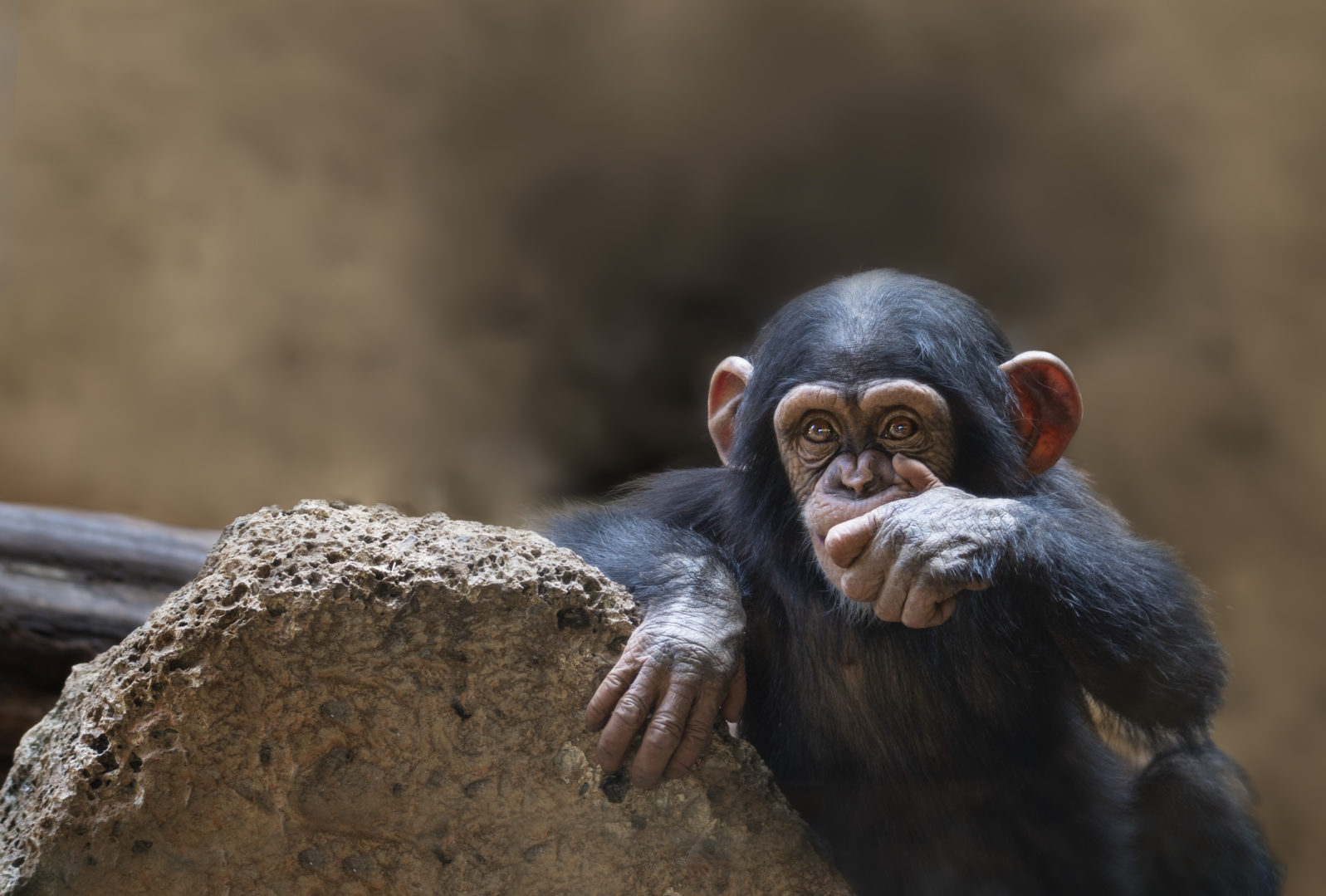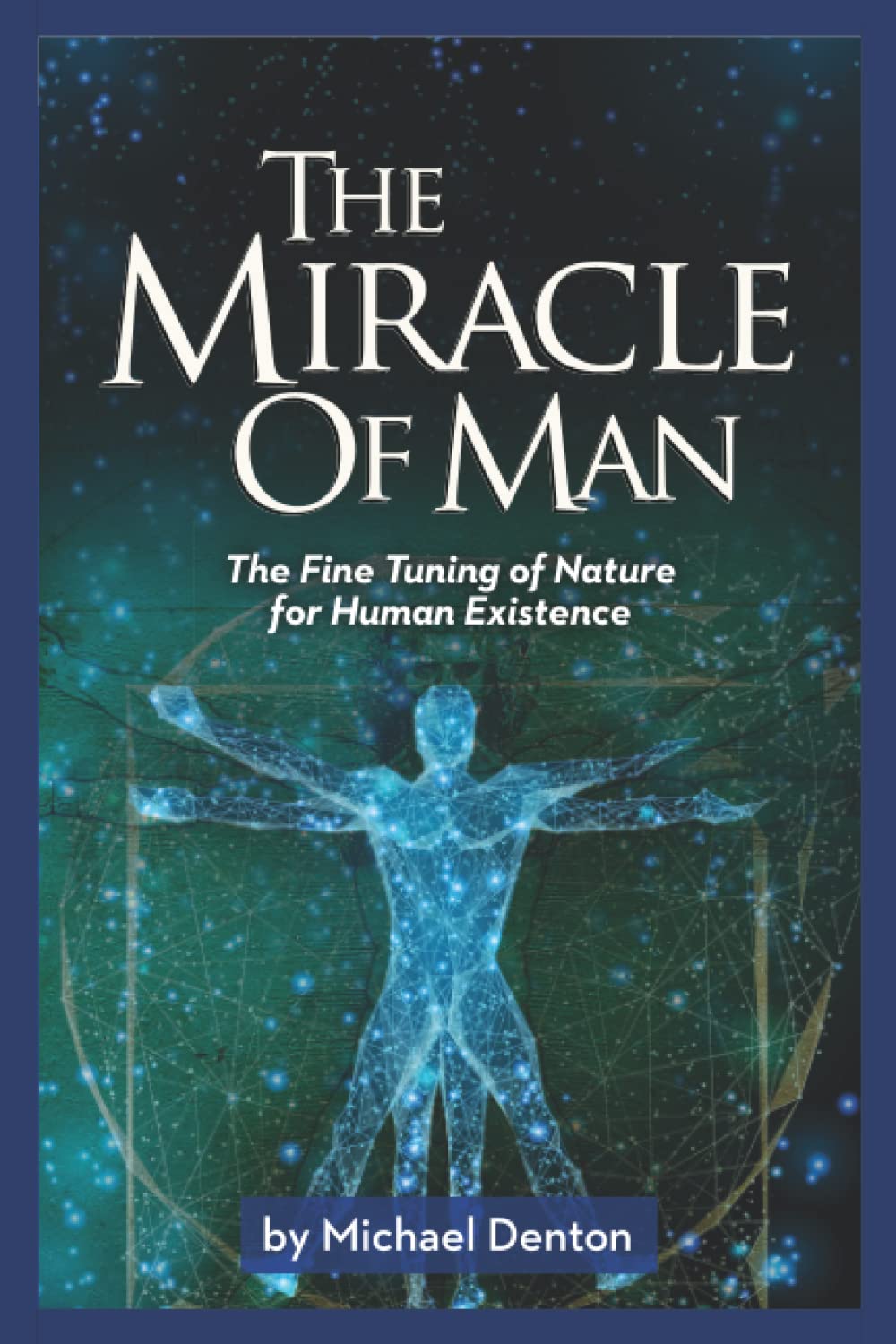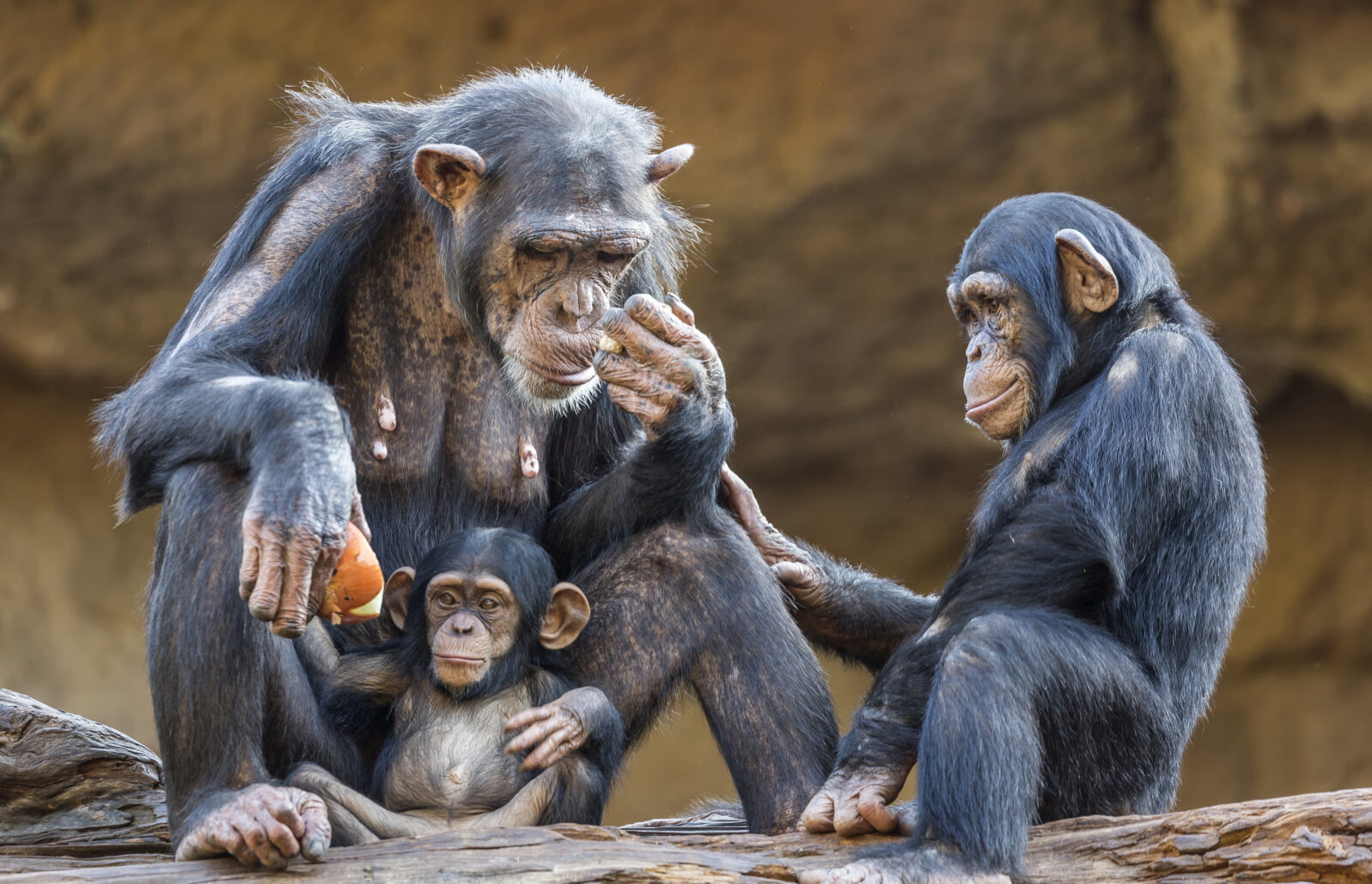Retro Future: In a 1960s Take on the 2020s, Chimps Do Our Chores
And drive cars. The Rand Corporation actually put out a video promoting the idea…Our “past future” — that is, what people fifty or sixty years ago thought life would be like today — can be instructive and sobering.
In 1964, the Rand Corporation put out the idea that by 2020, chimpanzees would be doing household tasks and (safely) driving cars.
(The chimps are from 40 seconds to 110 seconds.)
The idea that chimpanzees are just furry people must have been well entrenched in those days. It was during the same time period that some prominent scientists, including Frank Drake and Carl Sagan (1934–1996), were actively researching the idea of communicating intelligently with dolphins as well.
But the sad reality is that efforts to integrate chimpanzees (and dolphins) into the human world have often entailed considerable cruelty to the animals. World-class chimpanzee expert Jane Goodall (1934– ) has a lot of information on that.

First, chimpanzees are cute when they are young but, like all animals, they have their own wants and needs, which don’t include learning to do housework. In fact, as they mature, they find it increasingly difficult to even live in a typical human environment:
As infants, chimpanzees are affectionate, needy, and a delight to interact with. But chimpanzees grow up fast, and their unique intelligence makes it difficult to keep them stimulated and satisfied in a human environment. By age five they are stronger than most human adults. They become destructive and resentful of discipline. They can, and will, bite. Chimpanzee owners have lost fingers and suffered severe facial damage.
“Chimps as pets: The Reality” at THe Jane Goodall Institute UK
But it’s worse than that. Admitting that “It is impossible to train chimps to behave totally like humans,” the Institute also notes that some humans have mutilated chimpanzees in an attempt to keep them in a human environment:
Many owners, to delay the inevitable day that the chimp will have to be removed from the house, will pull the chimp’s teeth, put on shock collars — even remove thumbs in the mistaken notion that this will make it impossible for the chimp to climb the drapes.
“Chimps as pets: The Reality” at The Jane Goodall Institute UK
The day comes and there are no good options for adult chimps who can no longer live as house pets. They can’t just join a wild or zoo troupe of chimpanzees. They often end up as lab animals.
Chimpanzees in the entertainment industry (as the ones in the video above probably were) present similar issues. Show business chimps are separated from their mothers as infants and for a while they are needy, cute, and intelligent. But then…
When they are six to eight years old, they typically become more difficult to handle. To make them manageable, trainers may have the chimps’ teeth pulled or may fit them with shock collars under their clothes.
But usually the performers, when they are no longer amenable to discipline, are discarded…
These chimps are not accepted by accredited zoos. They tend not to fit into established groups. And so, unless they can be placed in one of the few sanctuaries for abused, surplus chimps, they will end up in roadside zoos or being quietly euthanized.
“Chimpanzees in Entertainment” at The Jane Goodall Institute UK

Also, biochemist Michael Denton points out in his recent book, The Miracle of Man (2022), that chimpanzees don’t even have human-like hands.
Yet the hand of the chimp and gorilla, although possessing a partially opposable thumb, is far less adapted to fine motor movement and control than is the human hand with its fully opposable thumb. Although some chimps exhibit a remarkable manual dexterity for certain tasks, none can match the manual dexterity of the human hand. And this is obvious on watching chimps at a “tea party” at the zoo. A dining task we hardly think about proves comically challenging for them due to their limited manual dexterity.
Michael Denton, “Man, with His Special Place in Nature, Was Designed to Use Fire” at Evolution News (May 24, 2022)
That would create a problem for chimps if they were expected to use conventional tools for work in a human environment.
It’s good to think we’ve made some progress in the last half century in understanding that chimpanzees are not “almost people.” We must still work on recognizing that we are not “almost chimpanzees” either.
You may also wish to read:
But, in the end, did the chimpanzee really talk? A recent article in the Smithsonian Magazine sheds light on the motivations behind the need to see bonobos as something like an oppressed people, rather than apes in need of protection.
